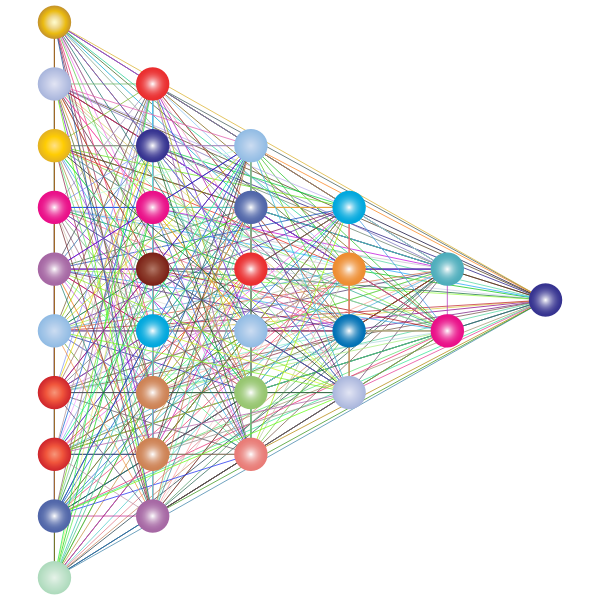Foundation Models, The AI Frontieredit
27 Jun 2025Artificial Intelligence has evolved rapidly, reshaping industries and redefining how we interact with technology. Central to this evolution are Foundation Models—advanced AI systems trained on vast datasets, capable of adapting to numerous tasks without extensive retraining. In this article, I’ll dive into the heart of Foundation Models, examining their current limitations, future potentials, and the transformative concept of “Software 3.0.”
The Problem Landscape
Humans vs LLMs: The Sample Efficiency Gap
Humans learn incredibly efficiently. A four-year-old child processes roughly 1 petabyte (1×10¹⁵ bytes) of visual information-50 times more data than GPT-4 uses—yet learns effortlessly and robustly. Current AI models, by contrast, exhibit significant inefficiencies, requiring massive amounts of data and computational resources.
Data Availability Ceiling
We’re quickly approaching a ceiling of available high-quality text data, predicted to be exhausted within this decade. This limitation pushes research towards multimodal models—AI that integrates diverse data sources such as images, audio, and sensor data—promising richer learning and greater efficiency.
Autoregressive Limits: Error Cascades
Traditional autoregressive models predict sequentially, token-by-token, which magnifies errors exponentially. Yann LeCun famously warned this approach is inherently limited for achieving Artificial General Intelligence (AGI). Future models must integrate predictive world-modeling to simulate outcomes before taking action.
Predictive World Models: The New Standard
Future AI must adopt internal predictive “world models,” continuously simulating outcomes before acting. This method enables deeper, strategic planning capabilities—moving beyond reactionary prediction to proactive imagination and reasoning.
Variable Computation: Adaptive “Thinking Time”
Today’s one-size-fits-all approach is inefficient. New models will employ adaptive computation, allocating computational effort dynamically—similar to human cognition—spending more resources on complex problems while swiftly managing simpler tasks.
Memory & Retrieval-Augmented Generation (RAG)
Retrieval-Augmented Generation enhances model reliability by dynamically integrating external knowledge into AI responses, reducing hallucinations and ensuring accuracy. Models now effectively use real-time data retrieval to augment their internal knowledge, significantly boosting their adaptability and utility.
The Power of Tokenization
Tokenization is fundamental, converting raw data into standardized discrete symbols that AI can understand. Effective tokenization facilitates multimodal fusion, where text, images, audio, and sensor data share a common language—transforming AI into versatile, unified foundation models.
Software 3.0: The Evolution of Development
Introduced by Andrej Karpathy, Software 3.0 redefines software development. In Software 1.0, developers explicitly code algorithms; in Software 2.0, data curation and model training become central. Software 3.0 positions large language models as general-purpose platforms programmed via natural language, significantly shifting development paradigms.
Transforming Software Development Processes
In Software 3.0, development cycles accelerate dramatically through rapid iteration driven by conversational prompts and AI-driven code refactoring. Developers evolve into orchestrators, shaping and guiding intelligent models rather than writing detailed procedural code.
LLM as Operating System
Foundation models are becoming akin to operating systems, providing memory management, scheduling, and API access. Applications become streamlined, relying on these powerful AI backbones. This paradigm shift raises new challenges, including:
- Reliability: Preventing hallucinations through structured grounding and sandboxed execution.
- Security & Privacy: Protecting against prompt injection and data leakage.
- Governance & Compliance: Establishing clear audit trails, licensing, and attribution.
- Sustainability: Reducing computational costs and environmental impacts.
- Ethical Alignment: Ensuring models produce safe, unbiased, and ethically sound outputs.
The Hopeful Future
Foundation models promise immense opportunities for collaboration between humans and AI, fostering new roles, enhancing creativity, and boosting productivity. However, responsible and ethical stewardship is crucial for ensuring these powerful tools positively impact society.
Foundation models and Software 3.0 represent an exciting AI frontier, blending technological innovation with human ingenuity to shape a future where technology complements and enhances human potential.
References & Further Reading
- Bommasani et al., Stanford CRFM, 2021.
- OpenAI, GPT-4 Technical Report, 2023.
- A. Karpathy, Software 2.0 (Medium, YouTube).
- Y. LeCun, World-Modeling AI (YouTube).
- 3Blue1Brown, Neural Networks Explained (YouTube).


